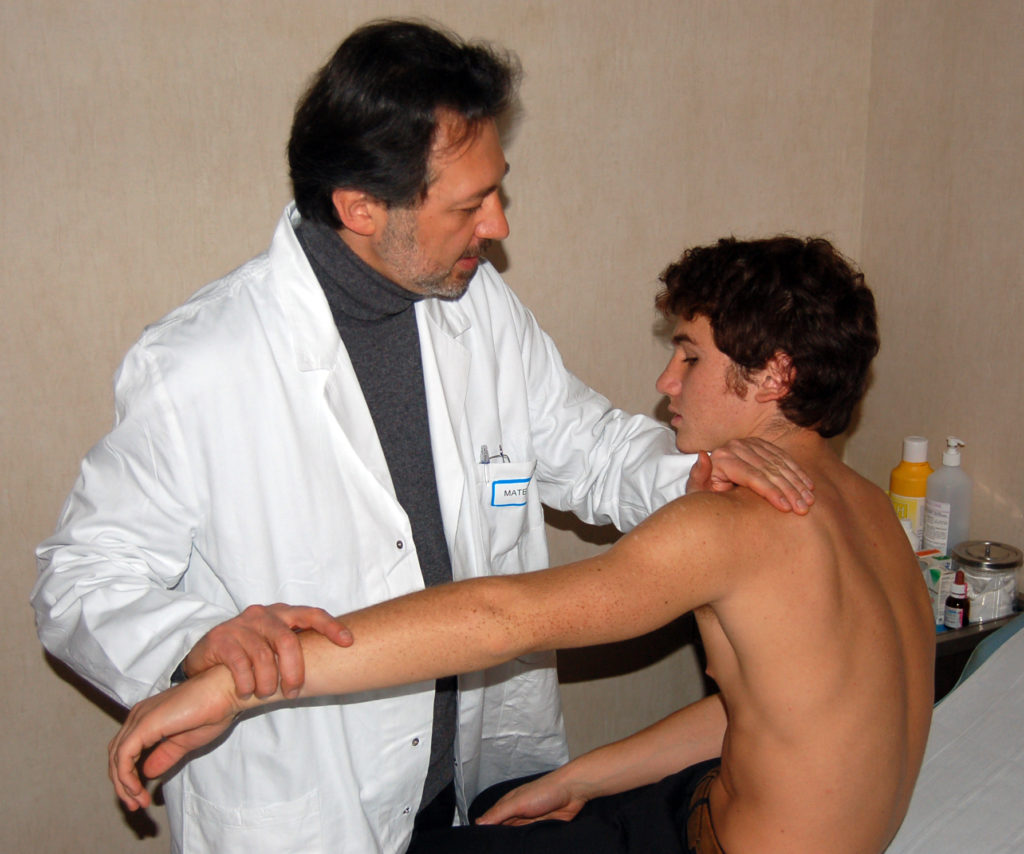Calcified tendonitis/tendonosis
What is calcified tendonosis?
This condition is when calcium deposits form on the tendons of the rotator cuff, most commonly on the uppermost tendon, called the supraspinatus tendon. Often they get re-absorbed by your body over time without causing problems. However, if they become too large, they can irritate the surrounding tissues, and in some cases even small deposits can start to inflame the tissues causing considerable pain.
What causes it?
At the moment, nobody knows for sure why these deposits form.
How does it feel?
In the early stages, while the calcium deposits are forming, you may have no pain at all, or only mild pain. When the calcium is being reabsorbed, your shoulder will become painful and stiff, making moving your arm difficult.
Diagnosis
Your doctor will ask you about your medical history, and give you a physical examination. He will also ask you to have X-rays of your shoulder made over a period of time to see if new deposits are forming or whether they are being re-absorbed.
Treatment – conservative
Your doctor may prescribe ice-packs, anti-inflammatory medication, cortisone injections and you may need to wear a sling. He may also prescribe shock wave treatment which can help to ease the pain and start the process of re-absorption of the deposit.
Treatment – surgical
– Arthroscopic resection: your surgeon will make two tiny incisions in your shoulder through which he will insert the arthroscope (fibre-optic camera), and he will then locate the deposits. Next, he will remove the deposits and rinse the area free of all calcium crystals.
If there is significant damage to the rotator cuff tendon he will repair it, and if necessary, shave a thin piece off the bottom of the acromion to prevent it rubbing against the tendon.
In most cases you will be able to go home the same day as the operation.
Rehabilitation after surgery
You may be given a sling to wear for the first few days, and be prescribed ice-packs to help with any pain and inflammation. You will start physiotherapy exercises straight after the operation and continue then for about 2-3 months, starting with light exercises to straighten and move you arm, then stretching and gentle strengthening exercises. After 4-6 weeks you will start doing more strenuous strengthening exercises, working on rebuilding the rotator cuff muscles and improving their control.
When will I be back to normal?
You will be able to start driving after 7 days. You should be able to return to office work after a week, and manual work after 3-4 weeks. You can return to light sporting activity after 4 weeks, although as complete recovery may take up to 3 or 4 months so it is advisable not to participate in contact sports before then.
